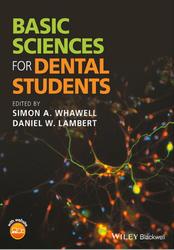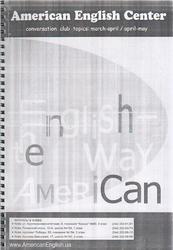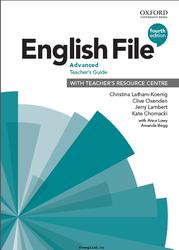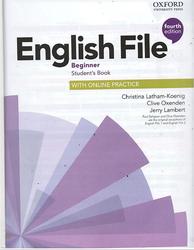As complex as the human body is, it is heavily dependent on just four atoms for its composition: carbon, hydrogen, nitrogen and oxygen. These atoms form structurally diverse groups of biologically important molecules, their structure always relating to their function in the same way that the cells and tissues of the body are adapted. Biomolecules commonly take part in relatively simple reactions which are subject to complex control to finely tune the essential processes that they mediate. Biomolecules are often large polymers made up from smaller molecular monomers and even though there are thousands of molecules in a cell there are relatively few major biomolecule classes. Fatty acids, monosaccharides, amino acids and nucleotides form di- and triglycerides, polysaccharides, proteins and nucleic acids respectively.

Oligosaccharides and Polysaccharides.
Monosaccharides are metabolized to provide energy (see sections Carbohydrates as a Fuel and The TCA Cycle for more on this) or, as just outlined, act as building blocks to form polysaccharides. Polysaccharides perform a wide variety of roles in the cell. They can be made up of either one type of monosaccharide (homopolysaccharide) or either more than one (heteropolysaccharide) and can form either linear or branched chains. A good example of a linear polysaccharide is cellulose, which is the main structural component of plant cell walls. The long chains of monosaccharides are heavily hydrogen-bonded to neighbouring chains and, in the plant cell wall, are embedded in a matrix of other polysaccharides, making it very strong and insoluble. A closely related polysaccharide, chitin, forms the exoskeleton of insects and crustaceans and has similar properties. As well as having structural roles, polysaccharides are also very important storage molecules. Starch, the storage molecule of plants, is made up of two polysaccharides: amylose and amylopectin. Amylose is a coiled string of glucose molecules whereas amylopectin is a heavily branched molecule.
Starch is partially digested by a salivary enzyme, amylase (see Figure 1.4), which hydrolyses the glycosidic bonds. In animals, carbohydrate storage is accomplished by glycogen, a heavily branched polysaccharide (much like amylopectin) that is hydrolysed by glycogen phosphorylase. Polysaccharides also occur as glycosaminoglycans. These are elastic, flexible molecules that are a component of cartilage, skin and tendons.
Contents.
List of Contributors.
About the Companion Website.
1 Biomolecules.
Daniel W. Lambert and Simon A. Whawell.
2 Cell Biology.
Daniel W. Lambert and Simon A. Whawell.
3 Tissues of the Body.
Daniel W. Lambert, Aileen Crawford and Simon A. Whawell.
4 The Cardiovascular, Circulatory and Pulmonary Systems.
Peter P. Jones.
5 The Nervous System.
Fiona M. Boissonade.
6 Introduction to Immunology.
John J. Taylor.
7 Oral Microbiology.
Angela H. Nobbs.
8 Introduction to Pathology.
Paula M. Farthing.
9 Head and Neck Anatomy.
Stuart Hunt.
10 Tooth Development, Tooth Morphology and Tooth‐Supporting Structures.
Alistair J. Sloan.
11 Craniofacial Development.
Abigail S. Tucker.
12 Saliva and Salivary Glands.
Gordon B. Proctor.
13 Introduction to Dental Materials.
Paul V. Hatton and Cheryl A. Miller.
Index.
Бесплатно скачать электронную книгу в удобном формате, смотреть и читать:
Скачать книгу Basic Sciences for Dental Students, Whawell S.A., Lambert D.W., 2018 - fileskachat.com, быстрое и бесплатное скачивание.
Скачать pdf
Ниже можно купить эту книгу, если она есть в продаже, и похожие книги по лучшей цене со скидкой с доставкой по всей России.Купить книги
Скачать - pdf - Яндекс.Диск.
Дата публикации:
Теги: учебник по английскому языку :: английский язык :: Whawell :: Lambert
Смотрите также учебники, книги и учебные материалы:
Следующие учебники и книги:
 Navigate, A2 Elementary, Teacher’s Guide, Meldrum N., 2015 — Navigate, A2 Elementary, Teacher s Guide, Meldrum N., 2015. Navigate is an English language course for adults that incorporates current … Книги по английскому языку
Navigate, A2 Elementary, Teacher’s Guide, Meldrum N., 2015 — Navigate, A2 Elementary, Teacher s Guide, Meldrum N., 2015. Navigate is an English language course for adults that incorporates current … Книги по английскому языку Identity, B1, Pre-Intermediate, Entry book, 2020 — Фрагмент из книги: The African elephant can weigh up to 6.35 tonnes and is the largest land mammal. However, the … Книги по английскому языку
Identity, B1, Pre-Intermediate, Entry book, 2020 — Фрагмент из книги: The African elephant can weigh up to 6.35 tonnes and is the largest land mammal. However, the … Книги по английскому языку Formula, C1 advanced, Exam trainer, Interactive eBook, With key, Little M., 2021 — FORMULA is the flexible, unique and enjoyable route to Cambridge exam success. Using Pearson s trusted exam know-how, FORMULA C1 … Книги по английскому языку
Formula, C1 advanced, Exam trainer, Interactive eBook, With key, Little M., 2021 — FORMULA is the flexible, unique and enjoyable route to Cambridge exam success. Using Pearson s trusted exam know-how, FORMULA C1 … Книги по английскому языку English the Way American — Фрагмент из книги: Families that consist of a father and mother and their children are known as nuclear families. An … Книги по английскому языку
English the Way American — Фрагмент из книги: Families that consist of a father and mother and their children are known as nuclear families. An … Книги по английскому языку
Предыдущие статьи:
 Fly High 4, Teacher’s Guide, Lochowski T., 2011 — Fly High 4, Teacher s Guide, Lochowski T., 2011. Fly High is a motivating four-level course for young learners that … Книги по английскому языку
Fly High 4, Teacher’s Guide, Lochowski T., 2011 — Fly High 4, Teacher s Guide, Lochowski T., 2011. Fly High is a motivating four-level course for young learners that … Книги по английскому языку Fly High 1, Teacher’s Guide, Kozanoglou D., 2010 — Fly High 1, Teacher s Guide, Kozanoglou D., 2010. Fly High is a motivating four-level course for young learners that … Книги по английскому языку
Fly High 1, Teacher’s Guide, Kozanoglou D., 2010 — Fly High 1, Teacher s Guide, Kozanoglou D., 2010. Fly High is a motivating four-level course for young learners that … Книги по английскому языку Fly High 1, Pupil s Book, Kozanoglou D., 2010 — Fly High 1 offers an enjoyable introduction to English for children starting at the beginning of the school system. It … Книги по английскому языку
Fly High 1, Pupil s Book, Kozanoglou D., 2010 — Fly High 1 offers an enjoyable introduction to English for children starting at the beginning of the school system. It … Книги по английскому языку English World 3, Workbook, Bowen M., Hocking L., 2009 — English Work is the first-ever integrated ten-level print and digital English course for primary and secondary schools. Written by the … Книги по английскому языку
English World 3, Workbook, Bowen M., Hocking L., 2009 — English Work is the first-ever integrated ten-level print and digital English course for primary and secondary schools. Written by the … Книги по английскому языку




